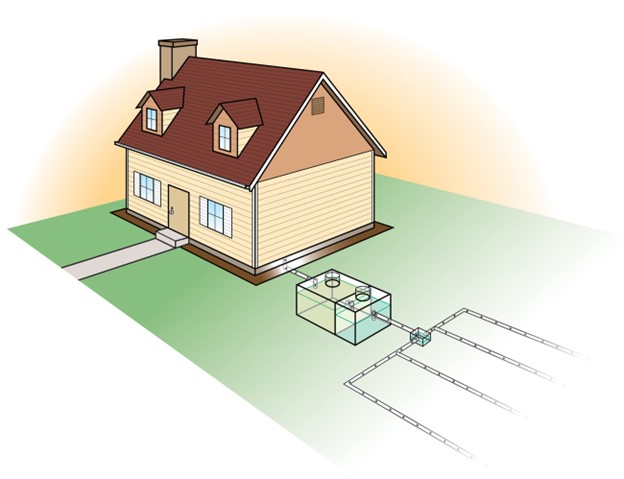A Comprehensive Guide to Private Septic Systems – Part 1
Imagine moving into a new home and finding that you cannot shower, use the toilet, wash your clothes, run the dishwasher, or do laundry. You could also go camping! This four-part series will cover four aspects of private septic system:
- Understanding how septic systems work and in general.
- What to look for when inspecting a home.
- Understanding and preparing for a septic system inspection.
- Once you have moved in, it is important to take care of your septic tank.
Understanding Septic Systems
You create wastewater every time you flush a toilet, shower, use the dishwasher, or run a washing machine. You may pay an extra fee to include wastewater treatment in your water bill if you live in the city or suburbs. If you live in rural areas or in an older house that was not updated and is not connected to the local sewer and treatment plant, you may be using a private system. About one quarter of U.S. homes use private septic systems. They combine engineering, components, and soil to treat and break down wastewater and solids.
Private septic systems are usually located on the land that is serving the property. Some communities and subdivisions manage their own waste, while others share a large septic system with several homes. Most of the systems require permits, either from the municipality or state. This is to ensure that drinking water and other groundwater sources are not accidentally contaminated.
The systems may be gravity-fed (with or without a pump, depending on the soil type and terrain), contain holding tanks or cesspools above ground, or use mounds and sand. They can also have a range of other approaches which are controlled by computers below the surface. The municipality will determine the general allowable in an area and what is required specifically on site. A soil engineer will typically come to the site to take soil samples and determine the soil composition, particle size, parcel size, and elevation contours of the property (commonly found in central Virginia!). The type of system to be installed is determined by the soil engineer who comes on site and takes samples. These requirements are given to the local septic contractor who then uses them as a blueprint for installing a new system.
As with any construction project, factors such as the experience and quality of the workers and managers, their application of the correct materials, installation on site, and even the season and weather can affect how well the new system functions. An owner who takes care of a gravity system can expect it to last for 30-40 years. Poorly installed systems can fail within months. Even a properly installed system that is poorly maintained (or worse ignored) by the seller or owner can cause problems.
There are many different septic service Weatherford TX systems, but they all work in a similar way: the waste is removed from the home, garage, barn, or other building and taken to a hidden area. Solids sink at the bottom and liquids rise to the surface. They are then treated with chemicals, aerobics, or various types of materials, such as soil, sand etc. It is then purified and becomes groundwater again.
Most systems consist of three basic components: a pipe in the home that collects waste and wastewater; a box or storage structure to hold the liquids, and a larger space where the liquids will be dispersed. Some systems do not have all these features.
It is important to understand the system before you buy it. You should know how it works and where all its components are located, even if it’s underground.
Septic systems are gravity-based unless the structure requires otherwise. Gravity is the only way to transport waste from the structure to the first part and the subsequent parts of the system. Gravity is the only thing that moves, and there are no moving parts to purchase or maintain. Water flows downhill at any grade, even if it is small. A septic tank is no different. A pump is not required unless the soil slopes upwards, even just a little. Sometimes a pump will be needed, when the acceptable soil is uphill, or when expansion plans, driveways, gardens, etc. are in place. It may be necessary to choose a location that is not ideal.
The use of on-site septic systems to manage waste is fascinating. You’re the director, supervisor, and engineer for your own system, off the grid! In Part II we will explain how to determine if there is a septic tank on a property, where it’s located, and why it should be inspected as part of the purchase.





